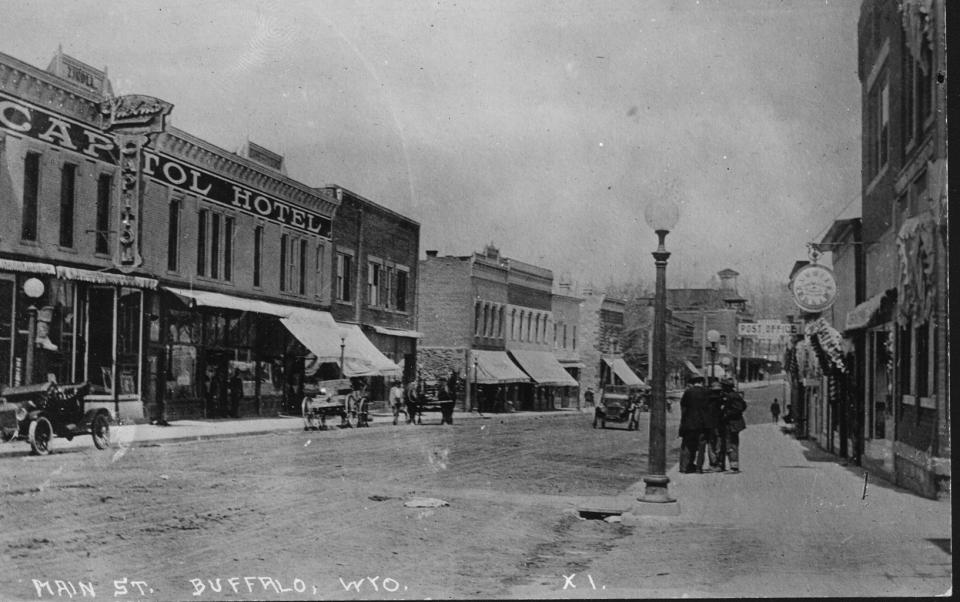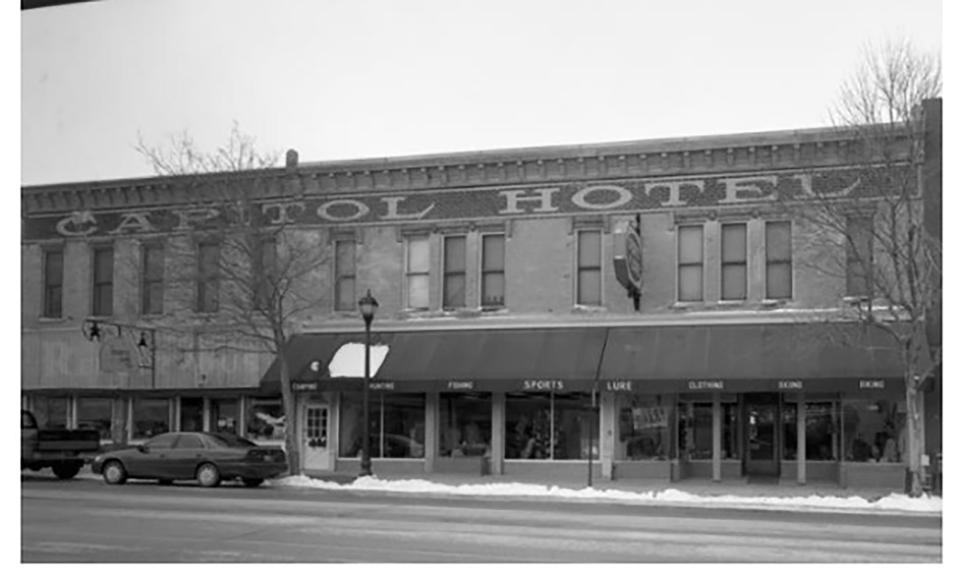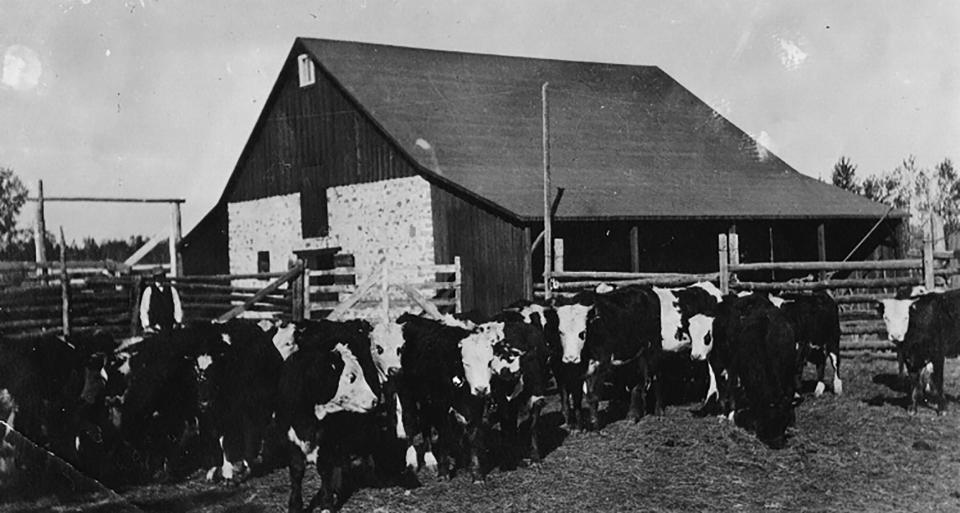- Home
- Encyclopedia
- William H. Zindel: Wyoming’s Immaculate Pioneer
William H. Zindel: Wyoming’s Immaculate Pioneer
Image
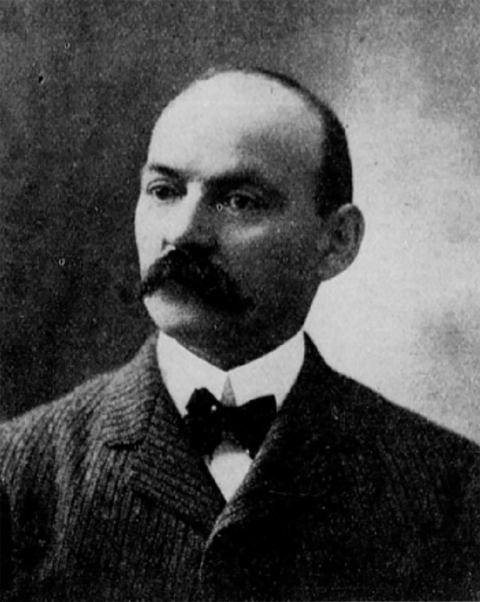
Everyone seemed to remember William Zindel’s enormous diamond ring. His stylish mode of fashion, well-groomed mustache—and dark eyes always moving and aware—added to his mystique. Arriving in Wyoming in 1884, six years before statehood, his contemporaries and historians all commented on that diamond ring of his—perhaps because it was a window into the opulent and daring character of one of Wyoming’s early pioneers. The fact that it disappeared when he was shot and killed kept them talking.
Beginnings
William H. Zindel was born Sept. 21, 1858, in Lock Haven, Pennsylvania. He was the youngest son of Jonas and Franziska Zindel. (Zindel rhymes with Kindle.) His parents operated a hotel in Lock Haven. He received an agricultural college education in his home state and went by Will, Uncle Bill, W.H., Billy, Mr. Zindel or William.
After Zindel first left his family home, he held a responsible position with the Armour Packing Company in Kansas City, Missouri, after which he traveled extensively due to his job with various railroad companies. He lived for a time in Colorado: Denver, Leadville, Durango, Silverton and Aspen City.
Settling in Wyoming
Zindel settled in Douglas, Wyoming Territory in 1884—undoubtedly drawn to the tent city by the likelihood of it becoming a train terminus. Zindel’s move to Douglas showed understanding gained from his railroad experience, seeing first-hand how train-terminus towns prospered in the West. The Rowdy West newspaper on the 10th of October 1886 described Zindel’s participation in transforming the tent city once the lots were platted and sold. “Scarcely had the voice of the auctioneer been hushed on the first day of the sale when tents and buildings were on wheels and being moved over from the temporary town. W.H. Zindel who purchased lot 29 in block 12, on Third Street, was the first to get his building on a lot and open for business.”
Image
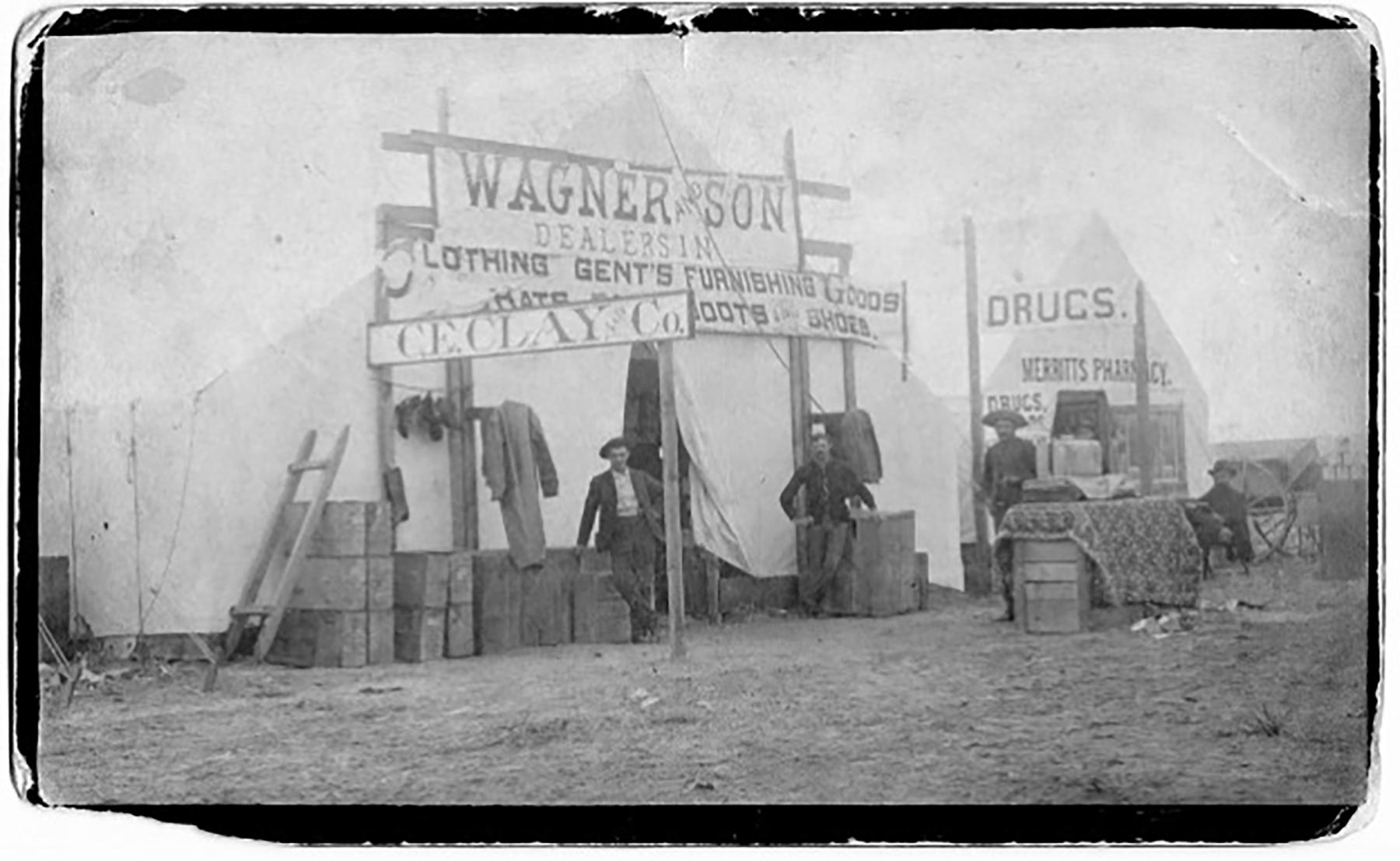
His business, the Arcade, advertised as having “only first class goods in stock,” and sold wine, liquor and cigars. It stood in contrast to the notorious saloons in the area, like the recently closed One Mile Hog Ranch—so well known for its debauchery that authorities shut it down in December 1885. While Zindel still dealt in vices like alcohol and gambling, he set himself apart from competitors by portraying his businesses as high-class places, frequented by gentlemen. Still, in its infancy, Douglas was a wild west town at heart; Zindel found himself sitting on the coroner’s jury in 1887 for the town’s first murder. He also became a victim of assault and battery in 1889.
Zindel wasn’t in the liquor business to make a quick buck and move on. He saw himself as a city booster, growing the new town and advancing it. In a letter written March 8, 1888, to “Friend Gus from Will,” Zindel described Douglas enthusiastically. “We are going to have a good town here this coming spring and summer for we have a new County Seat, and property has Gone up and Business will boom here. We have very fine weather here at present and Rail Road work will open up here the first of next month. We have Two Rail Roads here and Two of the best Coal Mines in the County and Everything to make a good town.” A year later, he sold his stock in the Arcade and opened a new “pleasure resort,” complete with a fancy “ice chest” as good as any that could be found back east. Zindel brought the modern conveniences west, while still participating in the wild west businesses of liquor, gambling and, presumably, prostitution.
However, trouble was brewing for Zindel in Douglas. The Historic Legend-Douglas, Wyoming—a history map published in 1976—explains that the “W.H. Zindel & Co. Liquor Store” neighbored with the “Mae Armes Brothel” (1886). Rumor mills and court records imply that Zindel and Mae Armes did not get along well as neighbors. He sold out, pulled up stakes and moved 150 miles north to Buffalo, Wyoming Territory.
Life in Buffalo
In Buffalo, Zindel carried on in the liquor and “pleasure resort” business with great success. Four years after his move, he began erecting two-story brick buildings that would come to be known as the “Zindel Block.” He carried on wearing fine suits with starched collars and a black bowtie, smoking expensive cigars, and visiting the barbershop daily for a shave and to style his mustache. He kept his businesses as impeccable as his dress.
Soon after moving to Buffalo, Zindel opened the Capitol Saloon and Hotel. Trophies of deer, antelope, and moose lined the walls and were one of the well-known and long-remembered features of the saloon. Known for his cleanliness, Zindel avoided having spittoons by installing a metal trough that ran the length of the bar with running water to wash away the disgusting ground clumps of soggy tobacco spat out by his patrons. Eventually, Zindel also set up taps for his bar. The Buffalo Bulletin described the “new system of plumbing,” in 1898 as “an automatic bar pump which delivers beer, ale and soda directly from kegs or fountains below, through ice-packed coils into faucets at the level of the bar.”
Newspapers boasted of the hotel’s artistically furnished and painted rooms, complete with modern conveniences such as steam heat, electric light, indoor plumbing—including hot and cold running water. This fine hotel was likely also a discreet brothel. In 1958, historian Thelma Gatchell Condit described Zindel’s hotel, “There were sleeping rooms above the saloon to be had with or without ‘girls’. The covered stairway is still there at the back of the building where the girls from ‘Mag Jesses’ Emporium’ could quietly and unobtrusively enter the rooms upon call. They were well-behaved and ‘perfect ladies’ when in public and did not mingle with the men in the saloon. Zindel’s place was well managed and outwardly respectable.”
Running a saloon and discreet brothel did not prevent Zindel’s marriage prospects. On Dec. 19th, 1895, Zindel married Minnie Oltman. Minnie Oltman Zindel was born Nov. 11, 1872, in Cleveland, Ohio to William and Marie Oltman. The family moved to Chicago where her father died when she was 9. Apparently, Minnie and her brothers, Charles and Ruddie Oltman, were “of Buffalo, Wyoming” at young ages. Her obituary describes her “bright and cheerful disposition and [she] always had a cheerful word for everybody. Her many charitable deeds will be long remembered in the county.”
Zindel and his wife maintained a fine reputation while he continued to bring entertainment to Buffalo. He brought boxing matches to town, installed a corral behind his saloon stocked with four or five elk, and even had a two-headed calf mounted and displayed. He invested in the latest music innovations, bringing an expensive music box from Nebraska for the saloon. A few years later, he even brought in a coin-operated automatic banjo. His saloon and hotel were considered “the finest this side of Cheyenne,” and attracted cowboys, politicians, businessmen, and outlaws alike.
Ranching near Kaycee
Like many of the businessmen and city-boosters of Wyoming, Zindel also carried on ranching operations in the Powder River country, eight miles west of Kaycee. I.S. Bartlett described Zindel’s ranch in his History of Wyoming, “And he now has one of the most complete and up-to-date ranch properties in Johnson County. Everything about the place is thoroughly modern.”
Zindel kept his ranch as orderly and clean as he kept his own style of dress and businesses in town. His success in raising cattle, sheep and horses and irrigating the land to grow grain, allowed him to sell his businesses in town and move permanently out onto the ranch in 1908. His saloon and hotel sold for $18,000, the equivalent of more than $600,000 in 2024.
When Zindel moved his wife to the ranch in 1908, they were not giving up any of the conveniences of town. His ranch home had the latest amenities of electricity, running water, steam heat, and it even featured the first shingled roof in Johnson County. Condit described the ranch as resembling a “small city,” with outbuildings including a blacksmith shop, a butcher shop, a bunkhouse, and a cookhouse in addition to the main home. Granaries, chicken coops, barns, and large sheds made the “small city” complete.
Always one to invest in the latest inventions, Zindel purchased a Thomas Flyer automobile enabling him to drive 50 miles each way to Buffalo and back home all in one day, “the distance being nothing as compared with the old means of travel.” Author John Gavin considered that never before had pronghorn, rabbits and deer seen anything like the Thomas Flyer. At the wheel of the flamboyant automobile sat the equally flamboyant W.H. Zindel. The Flyer reached a top speed of 60 mph and sold for $4,000 in 1908.
In 1903, The Sheridan Post described the operation, “Mr. Zindel is the proprietor of a large ranch on the middle fork of Powder River, stocked with a large herd of well-bred cattle. His progressive spirit and good business qualities brought him noticeable before the public. […] He devotes all of his time to his many business interests, and his faith in the future of Buffalo and Johnson County is as strong as when a poor young man he landed here thirteen years ago.”
Endings
It seems all good things eventually come to an end. Hard times can hit. In August 1916, a severe storm hit the Zindel ranch, destroying trees and worse, crops. In 1917, Zindel apparently leased his ranch to make up for the financial hit.
Minnie also struggled with poor health. It is recorded in social sections of the Buffalo Bulletin that William and Minnie sought treatment in Thermopolis, Wyoming and in Baltimore, Maryland for her severe rheumatism. One photo shows her in a wheelchair in her later years. This illness appears to have taken her life in 1918.
The March 6, 1919, Buffalo Bulletin reported, “Big Ranch Deal – Alvin T. Clark reports the sale this week of the W.H. Zindel ranch on Powder River to the Faddis-Spear-Given company, the deal including all the patented and leased land, cattle, horses, machinery, etc. Mr. Zindel retaining only one team of horses, household furniture and a few personal effects. The price paid is reported to be in the neighborhood of $280,000 [more than $5 million in 2024 dollars] and is thought to be a fair bargain at this price. This is the largest real estate deal that has been made in Johnson County in recent years and includes one of the best pieces of property in the country. Mr. Zindel has not decided definitely as to his future plans, but he will stay on the ranch for the next year at least in order to clean things up. He will probably buy property in Buffalo and will make this his future home.”
He stayed on for a year, then moved to Texas to try the oil business. Known for dabbling into the fine art of gambling, Zindel seemed to win at most bets. However, his gamble in the oil business did not pay off. In a 1991 oral history at the Johnson County Library, Lee E. Keith explains how the Keith family wound up in Johnson County. “Dad and Mom spent seven years in the oil fields of Texas. He had drilled a lot of oil wells for Billy Zindel. Zindel came down to Texas to become an oil magnate. He’d made some money in the bar business, primarily bootlegging because he made his own whiskey. Zindel came to Texas and contracted with my dad, who was an oil well drilling contractor at the time, to drill these wells. Dad drilled him eight or nine dry holes, and Zindel finally ran out of money and couldn’t pay Dad. He owed dad a substantial sum of money, and the only way that Dad could get anything out of it was to take 440 acres that Zindel owned on the Middle Fork of Powder River seven miles west of Kaycee. So finally in the spring of 1927, Dad sold his oil production in Texas, bought a new Dodge touring car, loaded us up, and started out of Texas. We headed to Wyoming to take up this Zindel property.”
According to the Zindel Family Papers, he then moved to Asheville, North Carolina, to be near his brother’s family and lived a comfortable life as a roomer at the Commerce Building. He was dabbling in different investments and on the day of his death, January 13, 1931, he was meeting with three men at the Langren Hotel.
In the end, the seventy-three-year-old Zindel died from a bullet that entered his chest through his left arm and lodged on his right side, collapsing a lung. Zindel died at Mission Hospital fifteen minutes after he arrived and did not make any statement to the police.”
While his murder was deemed accidental by the court, his family noted that his ever-present diamond ring was missing. The diamond ring that carried much of Zindel’s mystique as an opulent, clean, and wealthy city booster was never located. Minnie and William are buried together in the Zindel plot at Highland Cemetery, Lock Haven, PA.
Editor's note: Special thanks to the Wyoming Cultural Trust Fund, whose support helped make the publication of this article possible.
Resources
Primary Sources
- “Delay Inquest in Zindel Death for Investigation.” Asheville Citizen, Jan. 15, 1931. Johnson County Library Archives, Buffalo, Wyoming. (Hereafter JCLA)
- Historic Legend, Douglas, Wyoming. Map of downtown Douglas, prepared for the American Revolution Bicentennial, 1776-1976. Zindel Family booklet, Zindel Family file, JCLA
- History of Wyoming Vol. IV, I.S Bartlett Editor, The S.J. Clarke
- Publishing Company, Chicago, 1919 p. 175-176
- “Johnson County W.H. Zindel.” The Sheridan Post, Industrial Edition, Sept. 30, 1903. Wyoming Newspaper Project. Date August 8, 2024
- Keith, Lee E. (1921-1998). Oral history interview by Jim Dillinger in 1991 when Keith was 70 years old, JCLA.
- “Mrs. William H. Zindel.” Obituary. Buffalo Bulletin, Oct. 10, 1918. JCLA
- Wall, Tom. Personal Letter to Dorothy P. Beach, July 16, 1975, JCLA.
- Will (no last name given). Personal Letter to Friend Gus. Douglas, Wyoming, March 8, 1888. Copy in Zindel Family 2nd Generation in America, JCLA.
- Wilberg, Virginia Kalb. Personal Letter to family member Beachie, 1992, JCLA.
- “William H. Zindel.” History of Wyoming Vol IV Chicago: S.J. Clarke Publishing Co., 1919, 175-176.
- Wyoming Newspaper Project. Five hundred and eighty-two Zindel scans can be found on the Wyoming Newspaper Project website from The Buffalo Bulletin, The Buffalo Voice, The Buffalo Echo, The Kaycee Independent, and Bill Barlow’s Budget.
- “The Zindel Family 2nd Generation in America.” Self-published booklet. Zindel Family file, JCLA
Secondary Sources
- Chisum, Emmett D. “Crossing Wyoming by Car in 1908 New York to Paris Automobile Race.” Annals of Wyoming 52, no.1 (1980): 35.
- Condit, Thelma Gatchell. “The Hole-in-the-Wall.” Annals of Wyoming 30, no. 1 (April 1958): 31-32
- “Wheeler-Dealer Zindel Progressive Businessman of Early Day Buffalo.” Buffalo Bulletin, July 2, 1959, section 5, p. 2. JCLA
- “Former Buffaloite Recalls Early 1900s.” Buffalo Bulletin, Aug. 15, 1963, 2. Hawaii Advertiser. Reprint 1963. Gardiner B. Jones, Associate Editor, interview with his father. JCLA
- Gavin, John. “William H. Zindel ‘The Best is None Too Good.’” The Sentry 19, no. 1 (Winter 2010). Buffalo, Wyoming: Jim Gatchell Memorial Museum, 2 and 6.
- William H. Zindel, Buffalo’s First Century, Patty Myers, Ed. Buffalo, Wyoming: Buffalo Centennial Committee, 1984, 58, 110-112, 133, 159.

